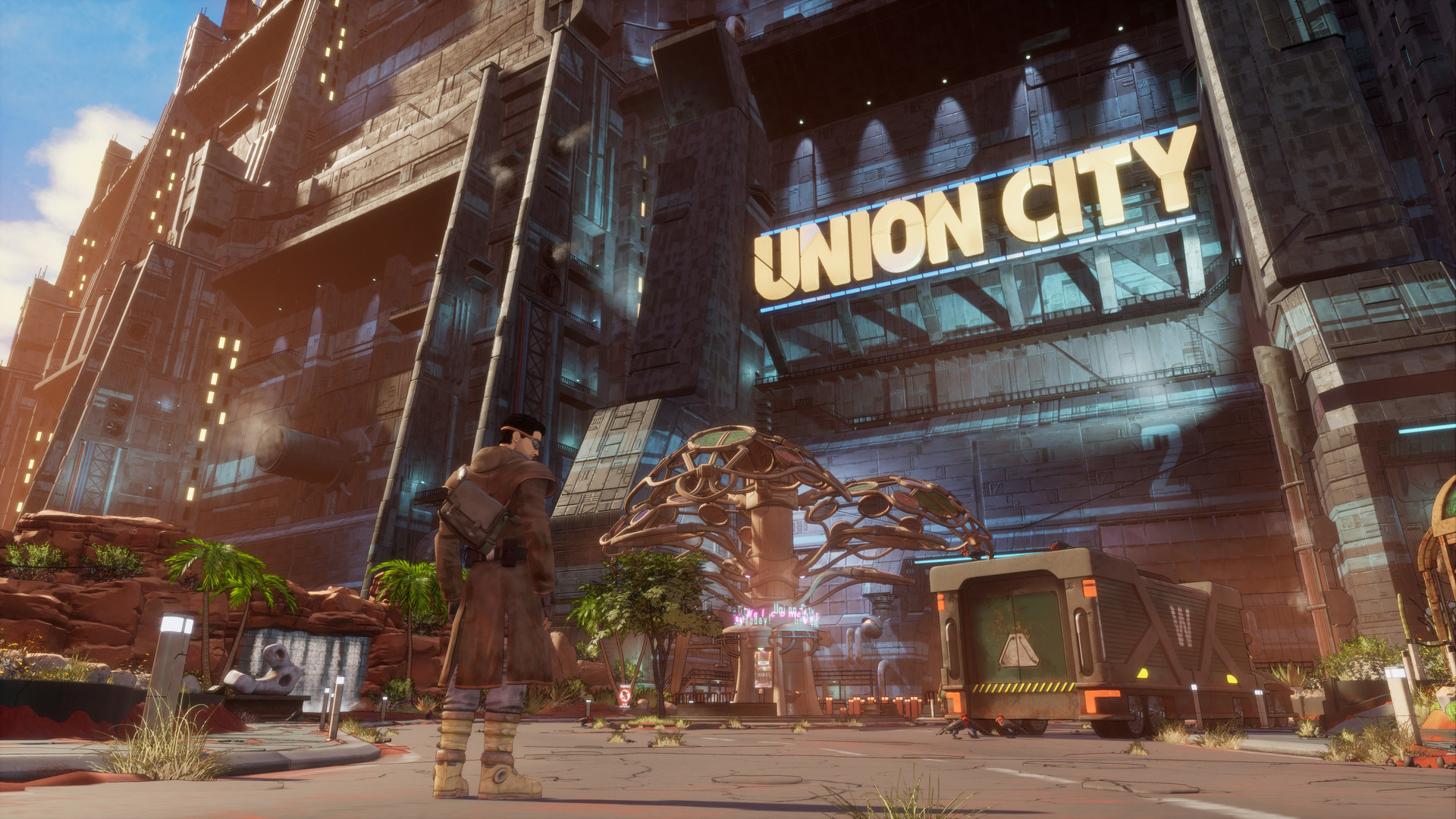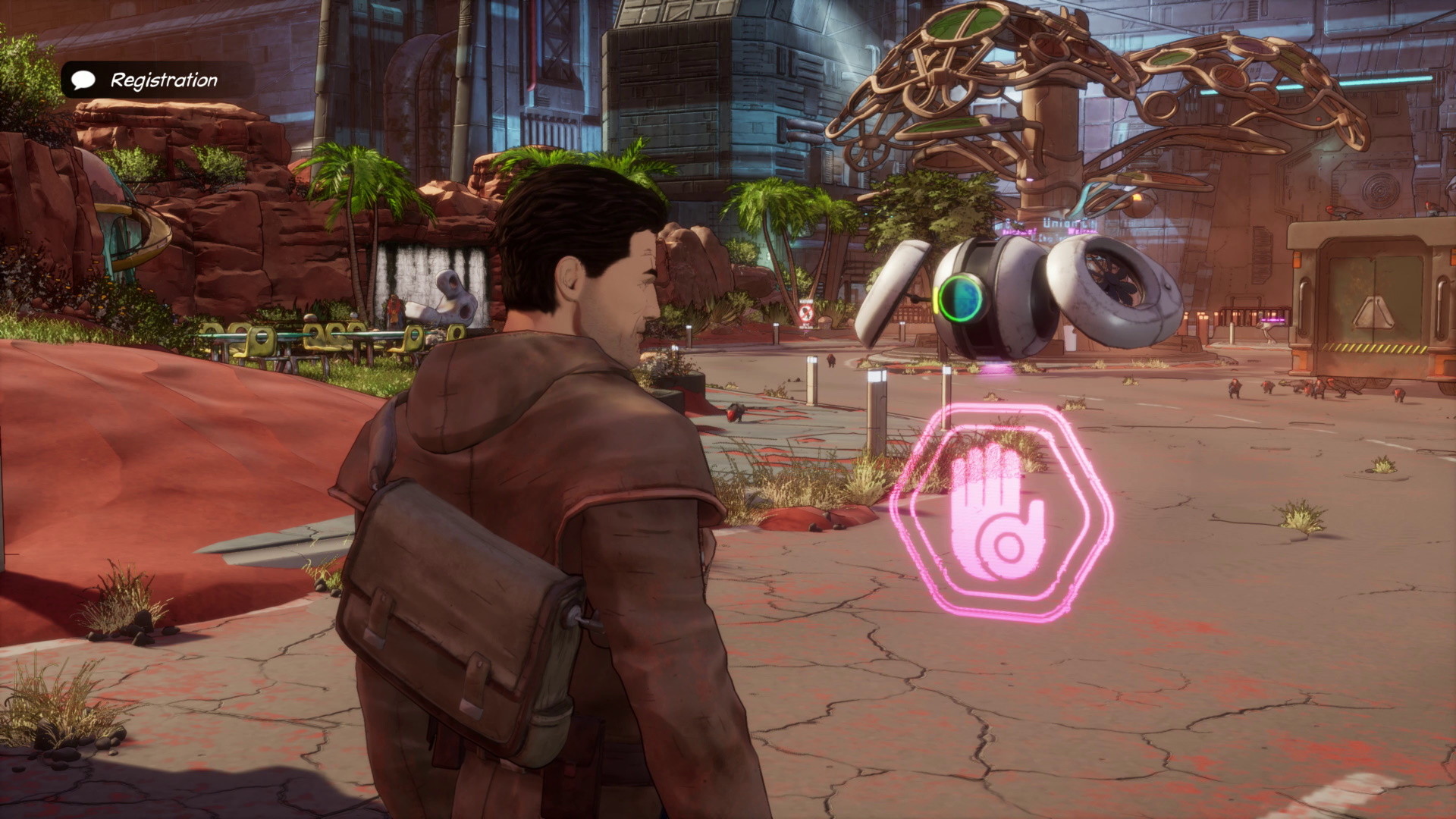One of the seminal, all time great point and click adventure games in the history of the medium is Beneath the Steel Sky, spoken of almost reverentially as one of the progenitors of the genre that would go on to become almost synonymous with the golden age of PC gaming. And yet, in an industry that is as trigger happy with remakes, re-releases, reimaginings, and indeed, sequels, as it is with running its successes into the ground, for whatever reason, Beneath a Steel Sky never saw a follow up in all the years that followed. Indeed, literal decades have gone by, and we have seen the rise, fall, and subsequent resurgence of the style of adventure games that it once pioneered – but we never saw a true follow up.
Until last year anyway, when Beyond a Steel Sky launched to an entirely new generation of players on PC and mobile devices. Now, that game has come over to Xbox, PlayStation, and Nintendo consoles as well, exposing that sequel to an even broader audience – which is good, because this is definitely an unusual game that warrants a look at from anyone who is interested in adventure games, narrative based games, or just good old world building and dystopian narratives. Beyond a Steel Sky is decidedly a cerebral and slower game – it takes its time setting up the conflict and the stakes, there’s obviously no action to speak of, and the bulk of the gameplay is walking around, talking to people, looking at things, and then repeating those same actions in different orders to open up new pathways of progression. Much like visual novels, it’s more similar to reading a novel than it is to playing a game – and it actually comes with a lot of the same strengths that a graphic novel might have, including art work by famed Watchmen artist Dave Gibbons.
That art is actually the first thing you notice about the game, before anything else. The game starts out with a very comic book style introduction, with a quick recap of the original game’s story, and an equally quick setup of the immediate conflict that kicks off this game’s follow up to that narrative. This introduction is presented in the form of comic panels, complete with some pretty gorgeous art and some speech bubbles and exposition boxes, and random words bolded and italicized in the tradition of some of the most celebrated comics of all time. This strong art style and aesthetic is then maintained even when the comic book style introduction gives way to the actual game side of things, which has you controlling Robert Foster, the protagonist from the first game, in a 3D space, examining objects in the environment, talking to people, and solving puzzles.

"That art is actually the first thing you notice about the game, before anything else. The game starts out with a very comic book style introduction, with a quick recap of the original game’s story, and an equally quick setup of the immediate conflict that kicks off this game’s follow up to that narrative. This introduction is presented in the form of comic panels, complete with some pretty gorgeous art and some speech bubbles and exposition boxes, and random words bolded and italicized in the tradition of some of the most celebrated comics of all time."
Now, in a lot of modern adventure games and their derivatives, there has been a decidedly noticeable degradation in how they look when you are controlling the characters, versus how they look when you’re just in non interactive story segments. Some of the earlier Telltale games from the previous decade, such as The Walking Dead, definitely looked worse for the wear during gameplay segments, while visual novels like Zero Time Dilemma look great during cutscenes, and then pretty awful during gameplay. Beyond a Steel Sky manages to maintain its extraordinarily strong sense of aesthetic throughout – yes, those early comic segments I mentioned look gorgeous, but then the art style and the execution of said art style continues to hold even when you are playing the game. The characters look quirky and charming, and really well drawn, and the environments especially create an extremely strong sense of place, from the outskirts of Union City, to the city itself, with its shining piazzas and skyline that stretches as far into the distance as the eye can see, to the pristine interiors you find yourself in.
Those gorgeous visuals do justice to the really strong writing that ultimately forms the crux of an adventure game like this one – and yes, that writing holds up its end of the bargain. Characters are colorful, with strongly defined quirks of personality that never feel exaggerated or reductive in a way that we can often see in so many forms of media, the dialog is sharp and has the traditional wit that one would expect from a sequel to Beneath the Steel Sky. And the world building, from the flavor text you can find in descriptions to Foster’s own monologues, is extremely effective at painting a verbal picture about the world you are in, and the dystopia that the game’s setting of Union City seems to have descended into. Through all of this, the game manages to get some jabs in about a lot of aspects of modern contemporary existence in the real world too, from the never ending push towards “smart” connected devices, to the over reliance on technology, to even how insular a lot of communities can be, turning a blind eye to others’ sufferings happening right outside their boundaries, because it happens to not concern them in the moment. Beyond a Steel Sky has a surprising amount of things to say, and it says them well.
Unfortunately, the pacing of the actual storytelling can be, well, slow. I mentioned that this is a cerebral game earlier, and while I did mean it as a compliment, it can often feel dreadfully trite interacting with every possible thing that is interactable and talking to the same few people over and over again as you try and puzzle out what you are supposed to do; when stuff in the story happens, it usually feels appropriately engaging and like a satisfying payoff for the time you have spent in trying to get it to happen, but getting there can take a while.

"It can often feel dreadfully trite interacting with every possible thing that is interactable and talking to the same few people over and over again as you try and puzzle out what you are supposed to do; when stuff in the story happens, it usually feels appropriately engaging and like a satisfying payoff for the time you have spent in trying to get it to happen, but getting there can take a while."
A large part of this has to do with the nature of the gameplay – it’s always going to be talking to people and interacting with objects, sometimes in repeated permutations and combinations, and often in service to some mostly simplistically designed puzzle that feels tedious to solve. The worst of it happens when the puzzle is simple, but still obtusely telegraphed, meaning that the solution feels uniquely unsatisfying and deflating when you do get it. The good thing is, the game includes a pretty good Hints system that you can peruse at any time – it starts by nudging you in the right direction, presumably hoping that you can figure things out from its directions yourself, but if you keep pulling it up, eventually it will give you the full solution outright. It’s balanced well too – you can only call up one hint every 30 seconds, meaning the game does expect you to follow up on the hint it gives you first yourself before letting you pull more help. It’s a fine line walked between being helpful, and outright just playing the game for you, and I think it’s well done. I just do think that a lot of the times the hint system ends up doing some of the heavy lifting for puzzles and problems that simply should and could have been better designed.
Not all the puzzles are poorly designed – a lot of them can feel like eureka moments in the tradition of the best point and click adventure puzzles from the genre’s heyday, for example, and the hacking puzzles are definitely fun little distractions. Those puzzles, which see you override the many connected devices and terminals throughout Union City and then rearrange their logic in some surprisingly effective visual representations of programming macros, present some of the best gameplay segments in the game – particularly because they are often paired with some of the best writing in the game as well.
How much you ultimately enjoy Beyond a Steel Sky will come down singularly to how much you enjoy its story, its world, and its characters. For fans of the original game, there’s a lot to love here – while this is clearly meant to be a standalone entry that newcomers can enjoy, it’s filled with references to the original game, and the conclusion of the story acts as much as a coda to the 1994 original as it does to this game’s narrative arc. For newcomers who aren’t already invested in the world, Beyond a Steel Sky does a remarkable job at setting up its world and conflict appropriately – but the slower pace of storytelling as well as the plodding gameplay could end up turning away a lot of people. Those who stay will find a very engaging experience – even if some nuances are lost on them, they will find a pretty effective story here populated with some delightfully memorable characters in a richly realized setting.
Almost 30 years have gone by since Beneath a Steel Sky; so much of the industry in general, and adventure games in particular, saw an evolution in that intervening period. Beyond a Steel Sky could easily have gone wrong. It could have stubbornly stuck to the past. refusing to account for how things have changed in the almost three decades since the original game; it could have tried to chase down the modern take on adventure games in the guise of Telltale and Donned games, losing a lot of what made the original so beloved in the process. Instead, it straddles a fine line between modernization and tradition, and delivers a well told story that, while decidedly beyond a must-play love letter for fans of the original, manages to deliver a compelling experience to newcomers along the way as well, in spite of some unfortunate stumbles.
This game was reviewed on Xbox One.
from Video Game News, Reviews, Walkthroughs And Guides | GamingBolt https://ift.tt/3o6tpL9

Comments
Post a Comment